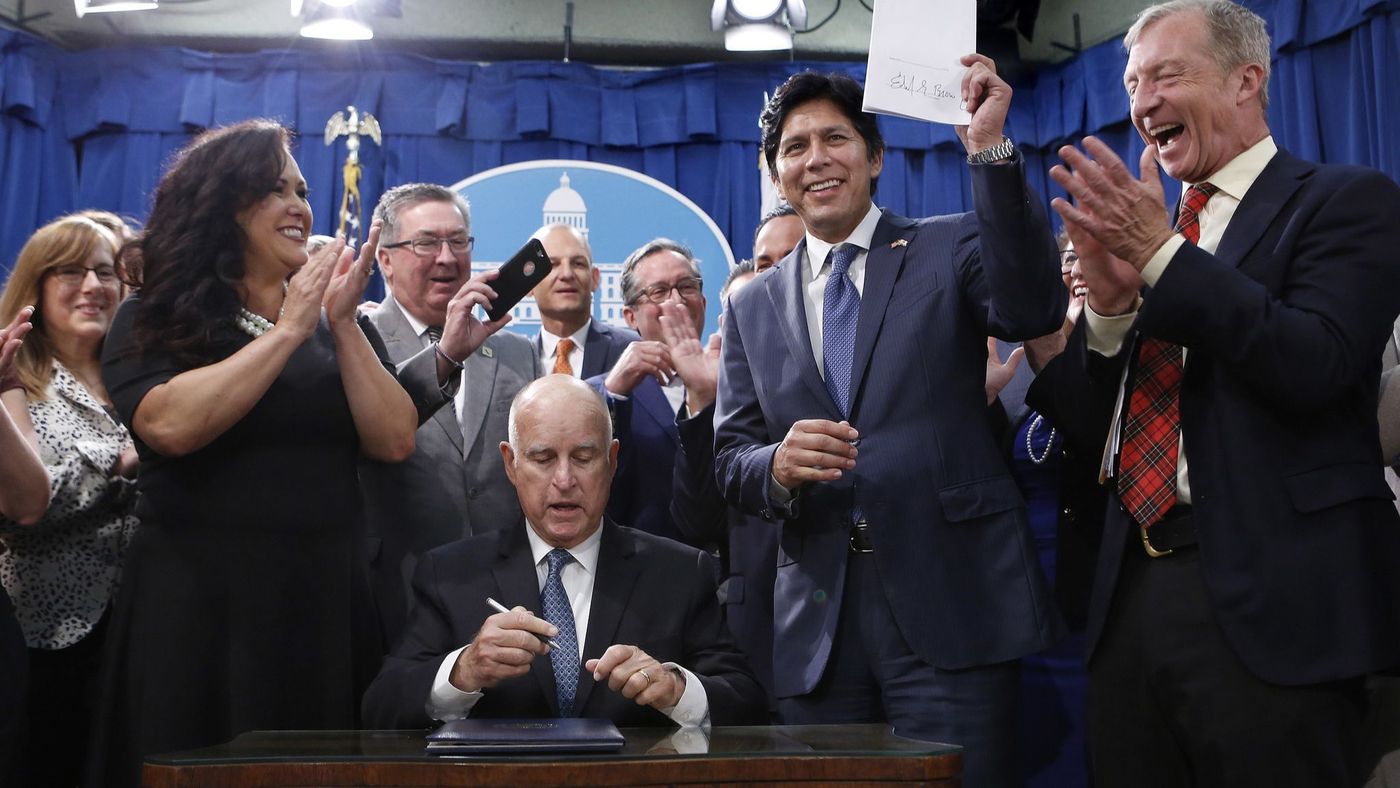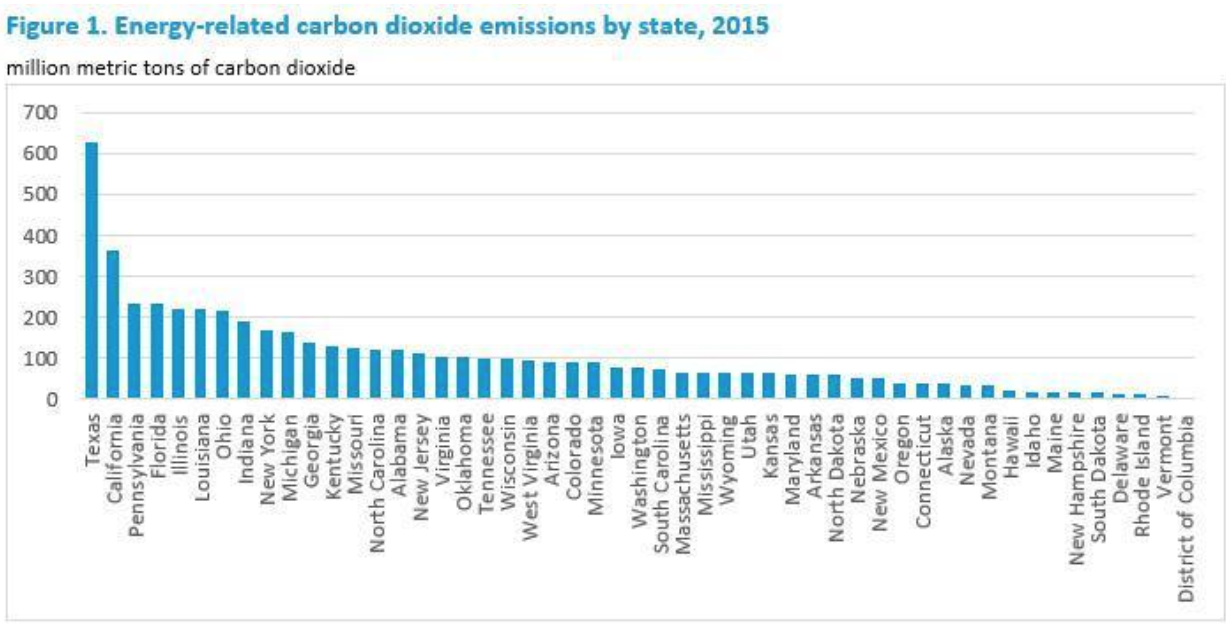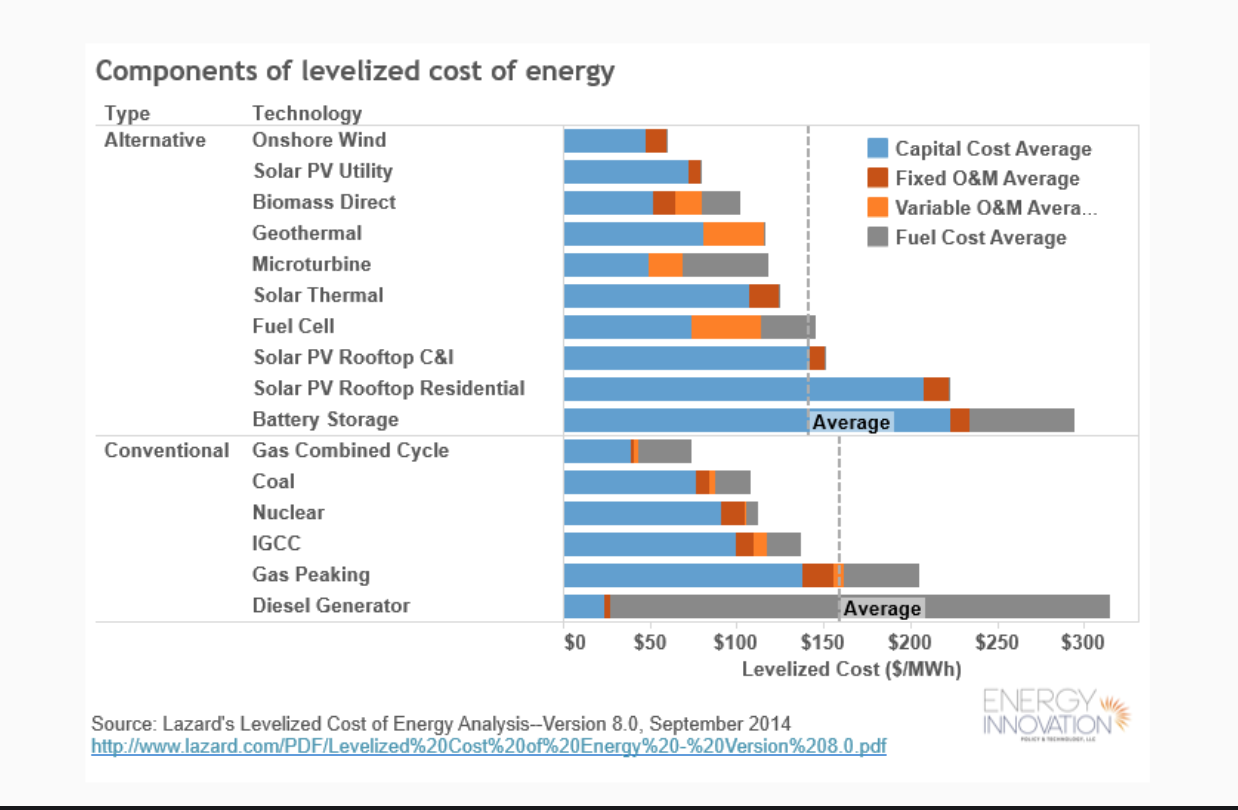
ODYSSEUS PYRINIS – OCTOBER 23RD, 2018
Just as the Trump administration and the EPA are relaxing environmental regulations, California, under the leadership of Governor Jerry Brown, is actively pursuing a policy aiming for cleaner energy. In defiance of the Trump administration, Governor Brown signed a bill in September of 2018 that set the goal for California to be sustained solely on renewable energy by 2045. According to this bill, California should be generating 60% of its energy using wind, solar and other renewable energy resources by 2030. While this is not a mandate, and thus there is no penalty if this goal is not reached by the specified dates, the goal of this bill is for California to achieve carbon neutrality by 2045. However, the feasibility of this new environmental initiative along with its cost implications are the underlying topics that will either support or undermine this goal.
Opponents to Governor Brown’s position of radically altering California’s energy sources raise economically centered concerns regarding the price of electricity. If California were to accomplish its goal of solely relying on renewable energy sources, the price of electricity in the state will skyrocket. This negative effect was cautioned by Bill Brough, a Republican assemblyman from Orange County, “One fact you cannot dispute: this does increase the cost … You cannot dispute that this is going to be passed on to the ratepayers.” It is not difficult to understand why a price increase in the electricity rate paid by consumers would be a side-effect of converting all state generated electricity from renewable energy sources. But let us first consider the positive outcomes associated with Governor Brown’s goal.
Given this political climate, political figures such as Governor Brown see it only necessary that states individually take matters into their own hands and continue the push towards greater renewable energy source reliance. Should the Governor’s goal be realized and California is capable of producing all of its energy from renewable sources by 2045, the annual output of carbon dioxide in the United States would be significantly decreased. Demonstrated in the diagram below, California is the second highest emitter of carbon dioxide behind Texas at around 360 million metric tons in 2015. Most of the carbon dioxide emissions from California are from petroleum, 64% or 234 million metric tons of carbon dioxide, rather than coal, which accounts for only 1% or 3 million metric tons of California’s emissions.

Given the best-case scenario in which California is able to switch all of their energy-related production methods to renewable sources, California would no longer be contributing to the emissions of energy-related carbon dioxide. This would result in a reduction of approximately 370 million metric tons of carbon dioxide emissions. Though in appearance this best case scenario appears as a significant amount, its large-scale effect is negligible considering that in 2017, the total US energy-related carbon dioxide emissions was estimated at 5.14 billion metric tons.
Despite the decrease in carbon emissions that would result should California succeed in generating all of its electricity from renewable energy sources by 2045, there are opponents to this goal which highlight the downsides of pursuing such a large-scale makeover of California’s power grid. In 2015, California produced approximately 44% of its electrical energy using coal, oil and natural gas. Additionally, another 30% of California’s electricity consumption in 2015 was accounted for from out-of-state sources. The proportion of electricity that California imports from other states has only increased. In 2010, California imported 25% of the energy it consumed. In 2017, California imported 33% of the energy it consumed. To achieve 100% renewable energy reliance, California would have to reverse this trend of increasingly importing more electricity from surrounding states and become fully self-sustained in terms of electricity production and consumption. This goal is said more easily than done, especially considering that current renewable energy sources and the technology that taps into these renewable reservoirs of energy cannot achieve the energy production density or consistency of current more traditional fossil fuel power stations.
What are the implications of building up the renewable energy power sources and abandoning almost half of the state’s current electrical generation infrastructure? It follows the argument used by Bill Brough and his warning about increasing electricity rates that consumers will face. The Energy Information Administration (EIA) has published data estimating the overnight capital cost and operational cost for different power plants. The overnight cost represents the cost of building that powerplant overnight. As of November 2016, onshore wind farms had an overnight capital cost of $1,877 per kilowatt (kW) and solar farms had an overnight capital cost of around $2,600 per kW. Likewise, onshore wind farms had an operational cost of $39.70 per kW-yr and solar farms had an operational cost of approximately $23.40 per kW-yr. In 2017, California produced approximately 206.3 TWh or electricity, from which approximately 90 TWh was generated using fossil fuels, mainly natural gas. In that same year, only 12.9 TWh was generated from wind and 24.3 TWh from solar. Renewable energy sources produce approximately half of the output produced from fossil fuels. This demonstrates a significant infrastructure gap that must be developed by 2045, imposing significant initial capital costs to construct these new power generation facilities. Consequently, with increased expenditure of the firms producing electricity in California to meet the 2045 goal, it follows that the price for electricity will also increase, the primary argument used by opponents to Governor Brown’s approval of the 2045 goal.
As demonstrated by Figure 1 below, the initial capital investment of these new renewable technologies will be the largest barrier to entry, a barrier that consumers are likely to pay. For instance, coupled with this new push for renewable energy reliance by 2045, an initiative was passed that required all newly constructed residential homes in California to be equipped with solar panels – an additional cost that will surely increase the initial market cost of housing sales, thus creating a larger barrier of entry for consumers wishing to purchase housing. In this way, the brunt of this initiative will be faced, not by those who can afford it, but by those who cannot.

It is not difficult to understand why the consumers will bear the burden of the cost to build more renewable energy power stations. Electricity is an inelastic good. Factories will still need electricity to run, businesses will still need their computers working, and civilians at home need electricity for everyday necessities such as keeping the refrigerator running, regardless of the price of electricity. Thus, to cover the cost of developing this new infrastructure, electricity firms will pass most of the burden to the consumers, increasing electricity rates. Depending on the severity of this increase, there could be a significant impact on private industry. If the cost of electricity is significantly raised, the operational costs of factories and businesses will also increase, cutting into their profit margins. Consequently, businesses would be less inclined to hire more employees that would in turn utilize more electricity in the office. The cycle is circular until a new equilibrium is reached.
Nevertheless, some proponents for the Governor’s plan have suggested that a means of controlling the rise of electricity prices is to create a regional power grid in which neighboring states would be able to more easily share their electricity with California and likewise, California share their electricity with regional states. Governor Brown is pushing hard for such a plan to be realized; however, even the Governor faces opposition from his own side. Environmentalists supporting the switch to renewable energy sources away from fossil fuels are not supportive of the idea for a regional power grid. They do not believe it is right for California to freely use electricity from other states that was generated using fossil fuels. However, even Governor Brown recognizes the danger of not pushing forward with this plan, stating that “those who don’t want it are going to be foisting very high prices on California, and I think there will be resistance to that …”
The plan to regionalize California’s power stems from the idea of creating a single authority which will manage most, or all, of the Western states’ power grids. Currently, California’s power grid is managed by the California Independent System Operator which oversees the market in which companies buy and sell power. It is estimated that California moving under a single regional manager would save consumers as much as $1.5 billion a year. The regional manager would lead to greater efficiency in managing the sources of electricity in the western grids. Under the current system lacking a single regional manager, California has to pay other states to use its electricity during times when wind or solar farms produce too much electricity and risk causing a blackout. Under the single regional manager, the sharing of electricity across states would be more efficiently managed and would not incur an extra cost for California.
Governor Brown has been attempting to push a bill through the state legislature to approve a central regional manager for California’s power grid; however, the Governor has been continually faced with opposition, simply because state legislators believe that such a system would encourage the use of fossil fuels rather than continue the transition to greater dependence on renewable energy sources. Should the regionalized power system not be implemented, but California continues to pursue the 2045 goal of 100% energy reliance on renewable energy sources, it can be expected that the consumers of electricity in California will be seeing larger bills. In the end, since the goal set by Governor Brown is not a hard mandate and there are no consequences for failing to reach it, it is entirely possible that California will not achieve its dream of significantly greater reliance on renewable energy sources as individual energy firms fail to build the necessary infrastructure to initiate the transition.
Featured Image Source: The Los Angeles Times
Disclaimer: The views published in this journal are those of the individual authors or speakers and do not necessarily reflect the position or policy of The Berkeley Economic Review staff, the Undergraduate Economics Association, the UC Berkeley Economics Department and faculty, or the University of California at Berkeley in general.



